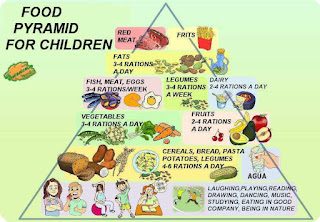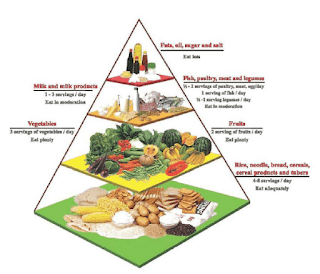Introduction
The concept of healthy eating is of paramount importance, particularly for growing children. One of the most effective visual representations of a balanced diet is the food pyramid. The food pyramid is a guide that outlines the recommended amounts of different food groups necessary for optimal nutrition. In this essay, we will delve into the fundamentals of the food pyramid, discussing its structure, the importance of each food group, and how it can be used as a tool to promote healthy eating habits in children.
The History and Evolution of the Food Pyramid
The food pyramid has evolved over the years as our understanding of nutrition has deepened. Originally introduced in the 1970s, it underwent several revisions to reflect advances in nutritional science. Today, we have a modern and intuitive iteration that emphasizes the importance of well-rounded and diverse food choices.
Structure of the Food Pyramid
The food pyramid is divided into several horizontal sections, representing different food groups in descending order of recommended consumption. The bottom layer consists of grains, followed by fruits and vegetables, dairy products, protein-rich foods, and finally, fats, sugars, and sweets at the top. The diverse and hierarchical structure aims to promote a balanced diet by ensuring adequate nutrient intake from various sources.
Grains
Grains occupy the largest portion of the food pyramid base. These include foods like bread, rice, pasta, and cereal. They serve as excellent sources of carbohydrates, providing energy and essential nutrients like fiber, minerals, and vitamins. Whole grains, such as brown rice and whole wheat bread, are particularly encouraged due to their higher nutritional value.
Fruits and Vegetables
The second layer of the food pyramid emphasizes the importance of fruits and vegetables. These plant-based foods are rich in fiber, vitamins, and minerals. They provide vital nutrients for growth, immunity, and overall well-being. It is advisable to consume a colorful range of fruits and vegetables to benefit from their diverse nutrient profiles.
Dairy Products
Dairy products, found in the third layer of the pyramid, are excellent sources of calcium, protein, and vitamins. They play a key role in the development of strong bones and teeth. Milk, cheese, and yogurt are common dairy products, and it is recommended to choose low-fat or fat-free options to ensure optimal nutrition.
Protein-rich Foods
The fourth layer includes protein-rich foods such as meat, poultry, fish, beans, nuts, and seeds. These foods provide essential amino acids vital for growth and repair of tissues. It is important to vary protein sources to benefit from different nutrients and avoid excessive intake of unhealthy fats.
Fats, Sugars, and Sweets
At the top of the food pyramid, we find fats, sugars, and sweets. While these foods are permissible in moderation, they should be consumed sparingly due to their lower nutritional value. Excessive intake of unhealthy fats and added sugars can lead to various health problems, making it crucial to limit their consumption.
Using the Food Pyramid as a Guide
The food pyramid serves as an excellent guide for children to understand and adopt healthy eating habits. Parents, educators, and healthcare professionals can use it to teach children about balanced nutrition and encourage them to make wise food choices. By following the food pyramid, children can avoid an excessive intake of unhealthy foods while ensuring they receive all the necessary nutrients for proper growth and development.
Teaching Children About the Food Pyramid
Introducing the food pyramid to children at an early age can foster healthy eating habits. Educators can use interactive activities and visual aids to explain the different food groups, their benefits, and how to incorporate them into daily meals. By actively involving children in meal planning and preparation, they can develop an appreciation for nutritious foods and take charge of their own health from a young age.
Conclusion
In conclusion, the food pyramid is a valuable tool that promotes balanced nutrition and healthy eating habits among children. By understanding its structure and the importance of each food group, children can develop a strong foundation for a lifetime of healthy eating. With proper guidance and education, the food pyramid can empower children to make informed decisions about their diets, leading to improved overall health and well-being.







0 Comments